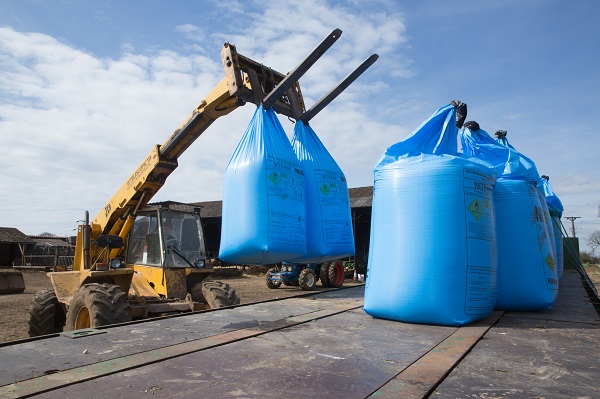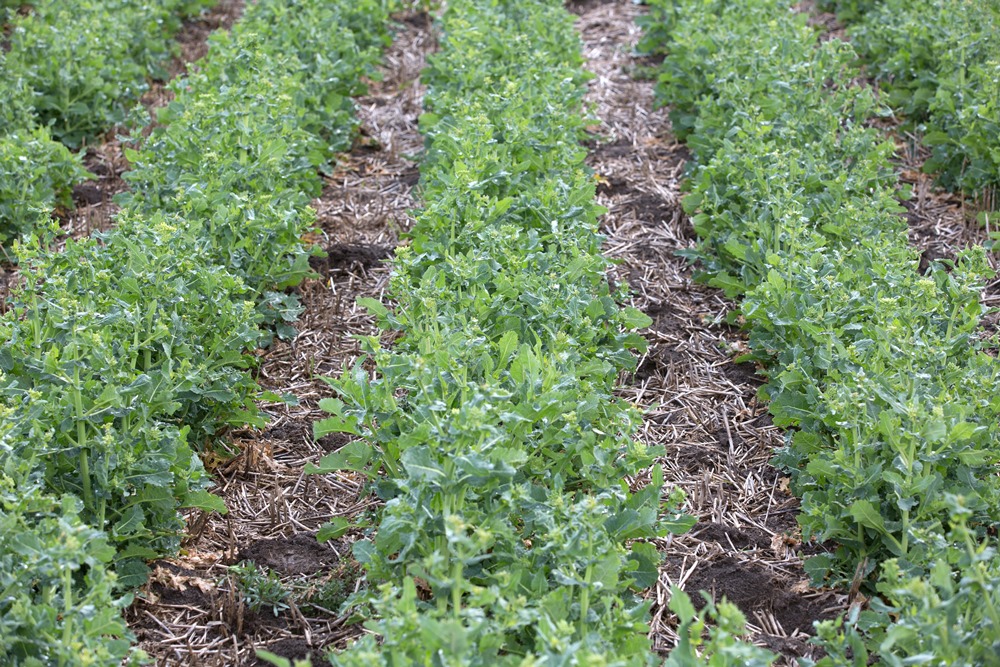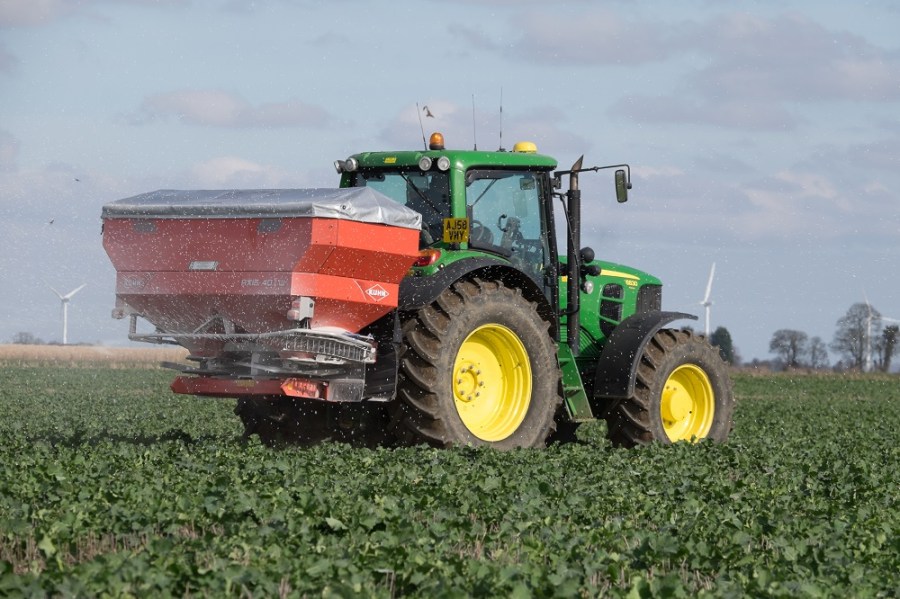In oilseed rape, tailoring nitrogen requirements to crop and soil reserves is vital to building potential. CPM examines how.
By Rob Jones
Oilseed rape needs careful management if it’s to contribute to the arable enterprise financially and not just fulfil the physical role of a break crop, says CF Fertilisers’ agronomist Allison Grundy.
Even with neonictonoid seed treatments and good prices, the actual average performance of the crop has changed little over the past 30 years despite considerable advances made by breeders.
“From a nutrition point of view, there are three key areas to getting the most out of OSR: the amount of nitrogen needed to maximise yield, how this’ll affect canopy growth and the crop’s requirement for sulphur,” she says.
“As with cereals, the starting point is knowing how much the soil can contribute to crop growth and a simple soil mineral nitrogen (SMN) test is unlikely to give you the full picture.”
Removing the guesswork
There’s no point applying more fertiliser than you need to but maximising margins with OSR demands achieving yield potential so costs per tonne of production are kept as low as possible, she says.
“You have to achieve output with OSR – both yield and oil levels – and N-Min is an essential starting point in making the right fertiliser decisions to achieve this.
“For example, if N-Min suggests you have 50kgN/ha in the soil and 50kgN/ha is already in the crop, then the soil nitrogen supply (SNS) is 100kg/ha.
“Following the canopy management guidelines, you need to apply enough nitrogen from the bag to get a further 75kg/ha into the crop. The optimum canopy size by green bud is 3.5 GAI (green area index units) which is equivalent to 175kgN/ha (50kgN/ha per unit of GAI),” she explains.
Typically, on mineral soils crops only recover on average 60% of the nitrogen applied and therefore to ensure 75kgN/ha gets into the plant, 125kgN/ha should be applied.
“If you can achieve that, and all other factors being equal, that should lay the foundation to achieving a 3.5t/ha yield,” says Allison Grundy.

If the potential of the crop is greater than 3.5t/ha, more nitrogen is needed from the bag.
However, if the potential of the crop is greater than 3.5t/ha, more nitrogen is needed from the bag to satisfy the additional yield potential.
“The canopy management principle is to apply a further 30kgN/ha for every additional 0.5t/ha above 3.5t/ha and this should be applied at early yellow bud. So a 5.0t/ha crop would require a further 90kgN/ha.”
The canopy management system developed a number of years ago, identified that poorer yields resulted from those crops which had over thick canopies, she points out.
“As well as contributing significantly to the risk of plants lodging, thick canopies are inefficient at capturing light and a thick canopy at flowering reflects upwards of 80% of the radiating light, reducing the crop’s ability to photosynthesise and fill the seed pods.”
Managing growth through application timings
The crop canopy can be effectively managed throughout the spring by manipulating the timing and quantity of nitrogen applications, says Allison Grundy. This optimises the crop architecture which also helps improve the utilisation of nitrogen.
“It’s much easier to manage a forward crop by delaying fertiliser application than it is to manage a relatively backward crop in the spring.
“Canopy size is determined by an interaction between plant population, establishment, drilling date and nutrient supply throughout the autumn and winter.
“If the plant size is small it’s very difficult to get the canopy large enough so it can intercept enough light and take up enough nutrients to support a larger yield.”

Often the optimum plant population can be lower than you might think.
But often the optimum plant population can be lower than you might think especially if you’re growing hybrid type varieties, she says.
“OSR is a good compensator so fewer larger plants at a relatively low density will respond well to nitrogen applications in the spring.
“Often these crops fill in the space between plants with additional branching supporting the production of higher yields.
“Crops which are sown too thick are likely to produce a very thick crop early in the spring, which develops into inefficient canopies.”
The role of other nutrients
While nitrogen is ultimately key to yields, other nutrients are important in allowing the plant and roots to make full use of this, she adds.
“There are no silver bullets but if all nutrients are in balance, high levels of nitrogen utilisation can be achieved.
“Potash and phosphorus are important in avoiding any checks to growth and reduced nitrogen uptake, but sulphur is critical.”
Around 40kg/ha SO3 is a good starting recommendation for all cereal crops, especially premium ones, but if you’re unsure, the signs of sulphur deficiency are easily seen in OSR, Allison Grundy says.
“Soil tests aren’t a good predictor of likely sulphur deficiency and you need to be particularly vigilant on lighter soils in areas of high rainfall.
“The yellowing of newly emerging leaves in both cereals and OSR earlier in the season is a sure sign of sulphur deficiency and applying a sulphur-containing fertiliser should rectify any issues.”
Warning signs, too late to rectify in the current crop, are pale flowers which, in severe cases, can cause a crop failure.
Deep silty/clay soils are less prone but additional sulphur will still protect yields and maintain quality, she adds.
“ADAS trials have shown a doubling in yield on sulphur-deficient soils when this is corrected, but it’s still estimated that nearly one in three OSR growers never apply any sulphur at all despite indisputable evidence of its benefits.”
New recommendations
Several Sulphur response trials are currently in progress across the UK, to understand if the optimum Sulphur rate has changed & to quantify the Sulphur supply from organic materials. So far the experiments have measured a range of responses between 30-100kg SO3/ha, she points out.
“I think it’s likely that the typical recommendation will be in the region of 50-80kg/ha SO3 which is slightly less than the 112kg/ha previously recommended, although on soils which are likely to be very deficient this higher rate still stands.”
Addressing sulphur deficiencies can be simply and cost-effectively achieved with NS products such as CF DoubleTop (27N + 30SO3), SingleTop (27N + 12SO3) and Heartland Sulphur (24:8:8 + 8SO3) where P and K are needed too, she adds.
N-Min monitoring brings OSR savings

Jon Birchall is convinced a more precise approach to fertiliser management pays dividends in OSR.
After two years of using CF N-Min with DoubleTop and Nitram, farm management adviser Jon Birchall is convinced a more precise approach to fertiliser management pays dividends in OSR.
In 2015 trials at the 600ha Sundorne Estate near Shrewsbury, which he manages through its agent Balfours, N-Min increased yields by 0.5t/ha – worth an extra £130/ha when compared with recommendations based on the RB209 Fertiliser Manual.
Across the farm, he applied less nitrogen and either maintained yields or managed to increase them.
In the more challenging year of 2016, trials showed he maintained yields at an impressive 4.63t/ha across both approaches but did so using 40kgN/ha less with the N-Min system than with the standard farm practice.
In a 32ha field which had received sewage sludge in the previous season, N-Min showed 60kgN/ha which with a further 75kgN/ha as crop nitrogen, gave a total SNS of 135kg/ha.
The CF N-Calculator used the SNS to suggest an application of 180kgN/ha, required to achieve a target yield of 5t/ha as opposed to the existing farm practice policy of 220kgN/ha.
“You have to be impressed with N-Min,” says Jon Birchall. “Over the past two very different production years it’s helped us increase our yields and reduce our overall fertiliser spend.
“We went in with an open mind, but it’s really opened our eyes and you can’t ignore the results we’ve achieved. CF N-Min, Nitram and DoubleTop are now essential elements of our OSR management moving forward.”




